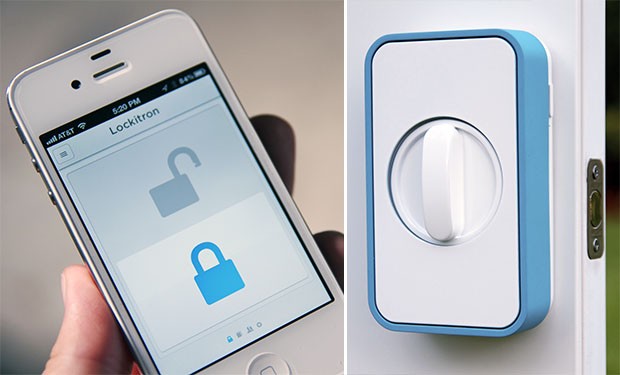Back when the Lockitron smartphone doorlock system crowdsourced its way to a few million bucks (after Kickstarter infamously told them to take a hike), there were all sorts of geeky questions that still needed answering. How the heck was this little WiFi-enabled box supposed to live off batteries for months on end? How was the average doofus back at home going to figure out how to configure it?
This morning, Lockitron creators Apigy answered these questions with an announcement that they’re working with Electric Imp, makers of a tiny WiFi chip that packs an absolutely brilliant trick up its sleeve.
You see, integrating WiFi into a new piece of consumer hardware is kind of a pain. Take Lockitron for example. It has no display, and no keyboard. So how does a user punch in all the details needed to get it up and running on their WiFi?
They could require you to plug it in over USB, install a configuration app, and manually set everything up every time you make a change… but that’s nasty. They could have the device broadcast its own WiFi network that you connect to and then configure through a browser… but that’s a bit of a hack.
Instead of any of that, the Imp uses something rather clever: strobes of light. You punch your WiFi network’s name and password into an app on your smartphone (a smartphone which you clearly have, if you’re planning on using a Lockitron. Also because it’s 20-friggin’-13.), hit “Send”, and hold your phone’s display up to a sensor built right into Lockitron. Within all of 3 or 4 seconds, the info is transmitted by way of a series of flashes (and voodoo witch magic, of course), and your shiny new robo-doorlock is online.
You can see a demo of the system, BlinkUp, here:
As for the power consumption issues: thanks to some super smart circuitry and a system that constantly retunes itself for minimal power consumption, Electric Imp says their card can power periodic things like the Lockitron for years on end off of just a couple of AA batteries.
While Electric Imp’s clever lil’ Imp card has been available in standalone form for hobbyists and developers for a while now, this is one of the first times it’s made its way into a consumer device. It’s great to see that the $7.9 million Electric Imp raised last year is going to good use.
(Oh, and doesn’t this partnership announcement just make this Twitter exchange from back in June of 2012 — months before the crowdsourcing campaign — a million times cooler?)
